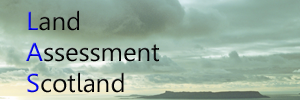Names in ‘Rais’ or ‘Wraes’
Names are given by parish. Following each name is a Grid Reference or Map name such as ‘Pont’ or ‘Roy’ to indicate the source. Documentary sources are given for some names, for instance those that are not mapped at all. See parish tables for further information
One of the striking features of the landscape of place-names in Renfrewshire is the number of names which incorporate an element such as ‘Rais’, ‘wrae’, ‘wrais’, ‘vrae’ etc. Sometimes this is singular, sometimes plural. Sometimes it is prefixed by another element as in Rywraithis, sometimes it is combined in a possessive sense such as Gryffiswraes (presumably the ‘wraes’ of the Gryffe).
What does it signify? The Scots word for a roe dee is ‘ra’ or ‘ray’ and it does help form place-names but this seems an unlikely source in this context.
Under the heading ‘ree’ (with alternative spellings such as wrae, rae, wreath etc.) the online Dictionaries of the Scots Language (https://dsl.ac.uk/) gives the meanings attached to various forms of this word. The common theme is of some sort of enclosure. This might be for coal, water, or animals such as cattle, pigs, sheep or poultry. In an end-note the editors discuss the form ‘(w)rae’ which, they say, is difficult to connect with their foregoing definitions. They comment that some have derived it “from O(ld) N(orse) vrá, a nook or corner, which is phonologically possible but has no semantic support, and is attested by Jam(ieson) only, as ‘an enclosure for cattle’ ”.
Jamieson does indeed offer ‘rae, wrae’ as an enclosure for cattle, particularly in the North of Scotland, and derives it from Icelandic ‘ra’.
The difficulty is that whilst this word occurs frequently in Renfrewshire place-names it does not appear in the same way in the place-name landscape of the north of Scotland. It may be that the term quoy, which does appear in place-names in the far north, served a similar function. Perhaps, on the west coast, the Gaelic word buaile (cattle-fold) was used to the same purpose. But, if these words had comparable meanings, then why was wrae so favoured in Renfrewshire?
In the accompanying file about place-names in Renfrewshire I have suggested two alternative derivations, after looking at parallels in Cumbria. It may be that what appears to be one class of names actually includes two types. In the following, I simply give the various instances found in Renfrewshire. Further research may reveal more about them.
Inverkip
Roy marks Wraes east of Majeston
Kilmacolm,
Wraes, Roy(PC), Wreathis (1678), Ainslie(1796), NS 3466
Bulwrais, 1489, Laing Charters (583) 1551. (This and Wraes immediately above cannot be the same place).
Renfrew
Rywrae, NS 538686. This is the only example in Renfrewshire which is north of the River Clyde.
Houstoun
Gryffe Wraes NS 3966, Pont?(probable); NLS Acc.4394, 9, Estate Map 1760.
Wraes NS 3968, Pont. Vrea by Mashington, NLS Acc.4394, 12, Estate Map 1760.
Kilbarchan
Manswray NS 3964
Ryverees NS 4364. This is probably another example of the name found in Renfrew parish.
Neilston parish
Wraes NS 4957
Paisley parish
Tower Rais or Over Rais or Rais Stewart NS 5159
Logansraes NS 5060
Paisley Rental (Cameron Lees) p clii (c. 1525) has two references to a John Knok of Wrayes or Wrayis. There is more than one place called Wrays in Renfrewshire but perhaps we should also allow for the fact that some compounds – such as Ryverees and Manswray – may sometimes just have been referred to colloquially as ‘Wrays’.

Leave a Reply